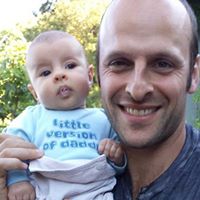Jonathan Max Bloch
age ~49
from Oakland, CA
- Also known as:
-
- Jonathan M Bloch
- Jonathan M Block
- Johathan Bloch
- Johnathan Bloch
- Phone and address:
-
5248 Desmond St, Oakland, CA 94618
5104170205
Jonathan Bloch Phones & Addresses
- 5248 Desmond St, Oakland, CA 94618 • 5104170205
- San Jose, CA
- Berkeley, CA
- Tampa, FL
- Middletown, CT
- 5248 Desmond St, Oakland, CA 94618
Work
-
Company:Zerve, incMay 2013
-
Position:Account management intern
Education
-
School / High School:San Francisco State University- San Francisco, CA2010
-
Specialities:BA in Business Administration: Marketing
Skills
Salesforce • Sales Research • Google Adwords Planner • DudaMobile
Specialities
Corporate • Securities • Global Hospitality Group • Banking • Investment Capital Group • Finance • Hospitality • Investments • Business Law • Intellectual Property Law • Real Property Law
Lawyers & Attorneys

Jonathan Bloch - Lawyer
view sourceSpecialties:
Corporate
Securities
Global Hospitality Group
Banking
Investment Capital Group
Finance
Hospitality
Investments
Business Law
Intellectual Property Law
Real Property Law
Securities
Global Hospitality Group
Banking
Investment Capital Group
Finance
Hospitality
Investments
Business Law
Intellectual Property Law
Real Property Law
ISLN:
908972799
Admitted:
1979
University:
University of California at Berkeley, B.A., 1975; University of California at Berkeley, B.S., 1975
Law School:
University of San Diego School of Law, J.D., 1979
Name / Title
Company / Classification
Phones & Addresses
Director
Advanced Data Exchange
Resumes

Counseling Intern
view sourceLocation:
330 Vernon St, Oakland, CA 94610
Industry:
Environmental Services
Work:
Administrative Office of the Courts Jan 1, 2012 - Dec 31, 2015
Field Scientist
Wra May 2011 - Apr 2012
Wildlife Biologist
Tampa Bay Water Feb 2009 - Aug 2009
Conservation Cooperative
University of South Florida Aug 2007 - May 2009
Graduate Assistant
Florida West Coast Resource Conservation & Development Jun 2008 - Aug 2008
Energy Resources Intern
Field Scientist
Wra May 2011 - Apr 2012
Wildlife Biologist
Tampa Bay Water Feb 2009 - Aug 2009
Conservation Cooperative
University of South Florida Aug 2007 - May 2009
Graduate Assistant
Florida West Coast Resource Conservation & Development Jun 2008 - Aug 2008
Energy Resources Intern
Education:
University of South Florida 2007 - 2009
Master of Science, Masters, Environmental Science Wesleyan University 1995 - 1999
Bachelors, Bachelor of Arts, Studio Art
Master of Science, Masters, Environmental Science Wesleyan University 1995 - 1999
Bachelors, Bachelor of Arts, Studio Art
Skills:
Freshwater Bioassessment
Teaching
Research
Arcgis
Regulatory Compliance Monitoring
Wetlands
Environmental Education
Grant Writing
Sustainability
Gis
Environmental Science
Languages
Nature
Visual Communication
Creative Solutions
Water Quality
Environmental Policy
Conservation Issues
Environmental Awareness
Ecology
Environmental Consulting
Wildlife
Environmental Impact Assessment
Environmental Issues
Ecological Restoration
Teaching
Research
Arcgis
Regulatory Compliance Monitoring
Wetlands
Environmental Education
Grant Writing
Sustainability
Gis
Environmental Science
Languages
Nature
Visual Communication
Creative Solutions
Water Quality
Environmental Policy
Conservation Issues
Environmental Awareness
Ecology
Environmental Consulting
Wildlife
Environmental Impact Assessment
Environmental Issues
Ecological Restoration
Interests:
Conversational Ability In Spanish
Powerpoint
German
Germanpc
Hebrew
Word
Excel
German Pc
Fluency In Portuguese
Mac
Powerpoint
German
Germanpc
Hebrew
Word
Excel
German Pc
Fluency In Portuguese
Mac
Languages:
English
Spanish
German
Hebrew
Dutch
Spanish
German
Hebrew
Dutch

Jonathan Bloch
view sourceLocation:
United States

Jonathan Bloch San Francisco, CA
view sourceWork:
Zerve, Inc
May 2013 to 2000
Account Management Intern Zerve, Inc
Sep 2012 to May 2013
Market Research Intern Village at Centennial Square
San Francisco, CA
May 2011 to May 2013
Resident Assistant
May 2013 to 2000
Account Management Intern Zerve, Inc
Sep 2012 to May 2013
Market Research Intern Village at Centennial Square
San Francisco, CA
May 2011 to May 2013
Resident Assistant
Education:
San Francisco State University
San Francisco, CA
2010 to 2014
BA in Business Administration: Marketing
San Francisco, CA
2010 to 2014
BA in Business Administration: Marketing
Skills:
Salesforce, Sales Research, Google Adwords Planner, DudaMobile
Medicine Doctors

Jonathan A. Bloch
view sourceSpecialties:
General Surgery
Work:
Appalachian Physicians Group General Surgery
101 Riverstone Vis STE 212, Blue Ridge, GA 30513
7069464253 (phone), 7064964249 (fax)
101 Riverstone Vis STE 212, Blue Ridge, GA 30513
7069464253 (phone), 7064964249 (fax)
Education:
Medical School
Baylor College of Medicine
Graduated: 1995
Baylor College of Medicine
Graduated: 1995
Languages:
English
Description:
Dr. Bloch graduated from the Baylor College of Medicine in 1995. He works in Blue Ridge, GA and specializes in General Surgery.

Jonathan Bloch
view sourceSpecialties:
Occupational Medicine
Work:
Occmed Colorado LLC
3449 Chambers Rd STE B, Aurora, CO 80011
7208596139 (phone), 7208593294 (fax)
3449 Chambers Rd STE B, Aurora, CO 80011
7208596139 (phone), 7208593294 (fax)
Languages:
English
Spanish
Spanish
Description:
Dr. Bloch works in Aurora, CO and specializes in Occupational Medicine. Dr. Bloch is affiliated with Kindred Hospital Aurora.
Isbn (Books And Publications)


British Intelligence and Covert Action: Africa, Middle East and Europe Since 1945
view sourceAuthor
Jonathan Bloch
ISBN #
0863220355

Global Intelligence: The World's Secret Services Today
view sourceAuthor
Jonathan Bloch
ISBN #
8187380810
News

Unearthing the Past: Scientists discover fossils of mammoths, sabretooth cats, rhinos that once roamed Florida
view source- Its an incredibly special place, said Dr. Jonathan Bloch, a UF paleontology professor who runs the Bloch Lab. We have a skull of a giant elephant relative where its lower jaw is articulated with its upper jaws.
- Date: May 24, 2023
- Category: Science
- Source: Google

Watch out: Mammals shrink when Earth heats up, study says
view source- "These results are very significant because they provide another independent test of whether climate drives changes in body size in mammals," said Jonathan Bloch, curator of vertebrate paleontology at the Florida Museum of Natural History, who wasn't part of the study. "If we start to see patterns r
- Date: Mar 15, 2017
- Source: Google

Monkeys Crossed From South America To North America 21 Million Years Ago; Fossils Found In Panama Canal
view source- Jonathan Bloch, a vertebrate paleontology curator at the Florida Museum of Natural History said that Panama at that time represents the southern extreme of the North American continent. He said the monkeys might have swum across. On the other hand, the feat surely was difficult as it required coveri
- Date: Apr 21, 2016
- Source: Google

Fossils of North America's first monkeys unearthed in Panama
view source- Prior to this discovery, New World monkeys were thought to have evolved in isolation on South America, cut-off from North America by a wide seaway,said lead author Jonathan Bloch, curator of vertebrate paleontology at the Florida Museum of Natural History on the University of Florida campus, in a
- Date: Apr 21, 2016
- Category: Sci/Tech
- Source: Google

New World Monkeys Were In North America 21 Million Years Ago, Fossil Discovery Suggests
view source- ossed the sea between North and South America during the early Miocene period. It may have swam 100 miles orunintentionally rafted across on mats of vegetation,said Jonathan Bloch, curator of vertebrate paleontology at the Florida Museum of Natural History on the University of Florida campus.
- Date: Apr 21, 2016
- Category: Sci/Tech
- Source: Google

North American monkey fossils found during Panama Canal excavation present a different story
view source- separated South America from North America at that time. Studys lead researcher Jonathan Bloch, the curator of vertebrate paleontology at the Florida Museum of Natural History, said that the prehistoric monkeys can be considered as the only mammals that are known to have crossed the boundary so early.
- Date: Apr 21, 2016
- Category: Sci/Tech
- Source: Google

Fossil Remains of First North American Monkey Discovered
view source- ossed the early Miocene Central American Seaway into present day Panama. So how were monkeys able to do this? Hopefully future fossil discoveries will help us better understand this extraordinary history. Jonathan Bloch, a curator of vertebrate paleontology at Florida Museum of Natural History said.
- Date: Apr 21, 2016
- Category: Sci/Tech
- Source: Google

Monkeys Migrated to North America Across 100 Miles of Ocean
view source- While it is not entirely clear how the monkeys made the trip, one hypothesis that Jonathan Bloch, a vertebrate paleontology curator at the Florida Museum of Natural History on the University of Florida campus, came up with is that the primates might have unintentionally rafted across on mats of ve
- Date: Apr 21, 2016
- Source: Google

Jonathan Bloch
view source
Jonathan Bloch
view source
Jonathan Bloch
view source
Jonathan Bloch
view source
Jonathan Bloch
view source
Jonathan Bloch
view source
Jonathan Bloch
view source
Jonathan Bloch
view sourceYoutube
Plaxo

Jonathan Bloch
view sourceLondonCEO at Exchange Data International

Jonathan Bloch
view sourceLondonExchange Data International
Classmates

Jonathan Bloch
view sourceSchools:
San Remo Elementary School Kings Park NY 1969-1976, W. T. Rogers Middle School Kings Park NY 1976-1979
Community:
Judi Schreiner

Jonathan Blindsey (Bloch)
view sourceSchools:
West Chester University of Pennsylvania West Chester PA 1999-2003
Community:
Mary Baker, Maria Pisoni

San Remo Elementary Schoo...
view sourceGraduates:
Jonathan Bloch (1969-1976),
Debbie Dimelfi (1973-1977),
Jason Bloch (1974-1981),
Staci Levin (1974-1976)
Debbie Dimelfi (1973-1977),
Jason Bloch (1974-1981),
Staci Levin (1974-1976)

W. T. Rogers Middle Schoo...
view sourceGraduates:
Jonathan Bloch (1976-1979),
Jen Long (1982-1985),
Sean Friedman (1979-1982),
Ciara Murphy (1990-1994),
Mario DeLara (1978-1980),
Virginia Thompson (1979-1982)
Jen Long (1982-1985),
Sean Friedman (1979-1982),
Ciara Murphy (1990-1994),
Mario DeLara (1978-1980),
Virginia Thompson (1979-1982)

Lawrence High School, Nas...
view sourceGraduates:
Jon Bloch (1972-1976),
Gus Diiorio (1971-1975),
Margarita M Hassan (1966-1970),
Caryl Ferkauf (1972-1976)
Gus Diiorio (1971-1975),
Margarita M Hassan (1966-1970),
Caryl Ferkauf (1972-1976)
Myspace
Flickr
Googleplus

Jonathan Bloch

Jonathan Bloch

Jonathan Bloch

Jonathan Bloch

Jonathan Bloch

Jonathan Bloch

Jonathan Bloch
Tagline:
Vertebrate Paleontology

Jonathan Bloch
Get Report for Jonathan Max Bloch from Oakland, CA, age ~49















